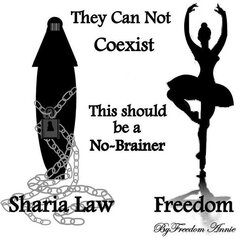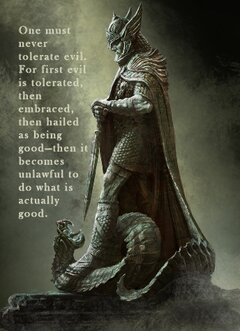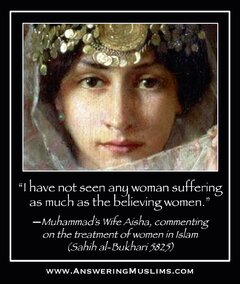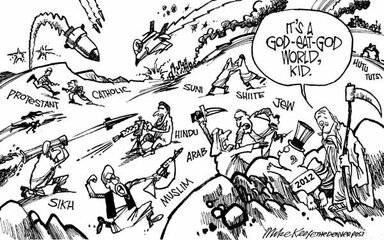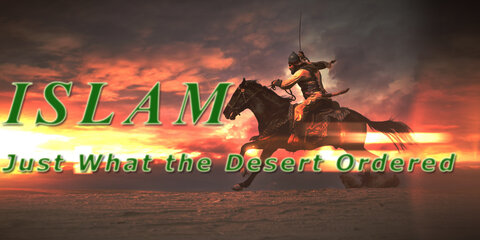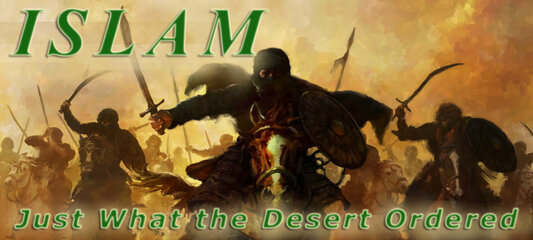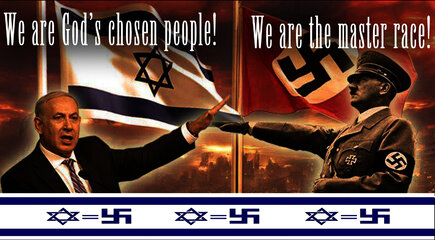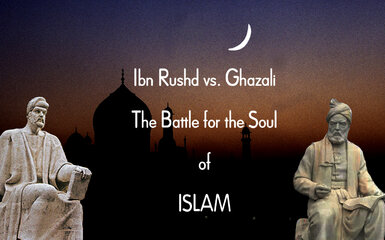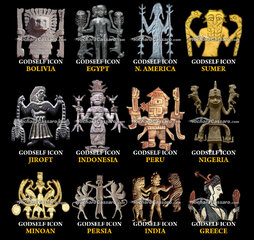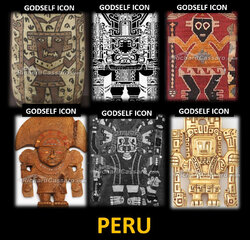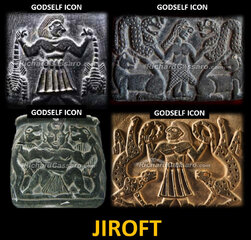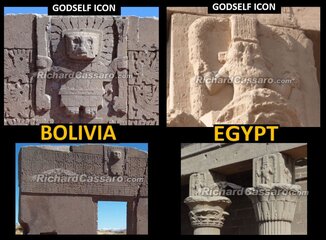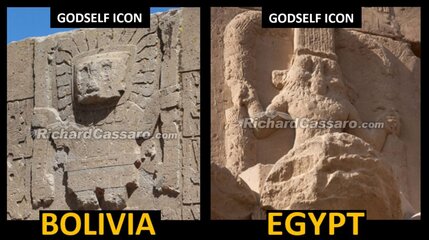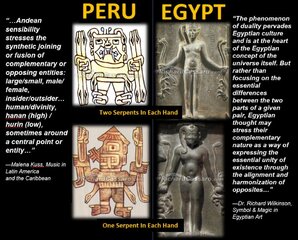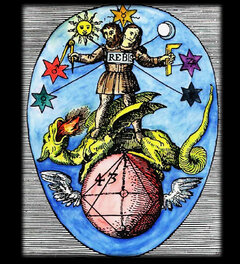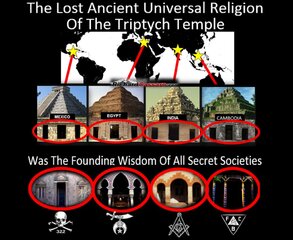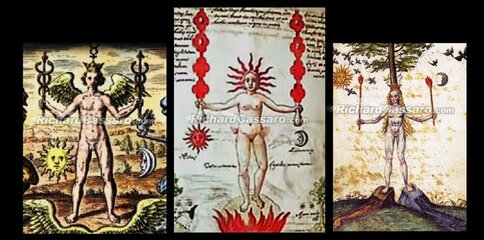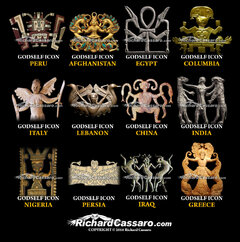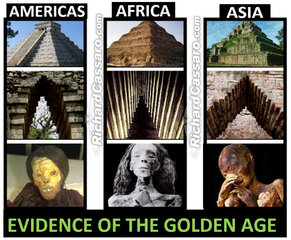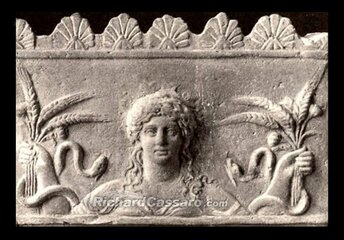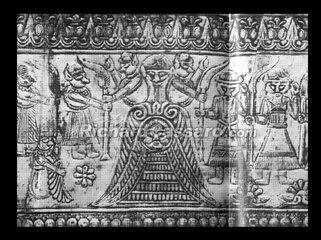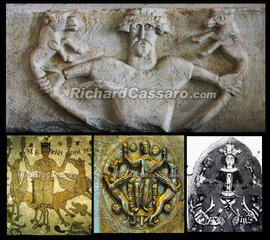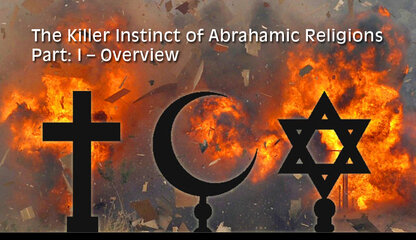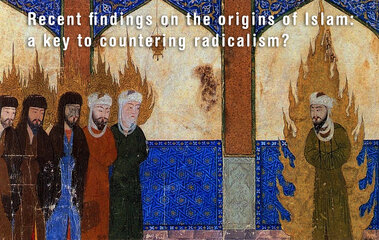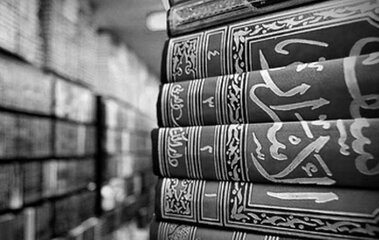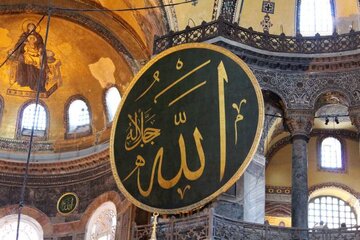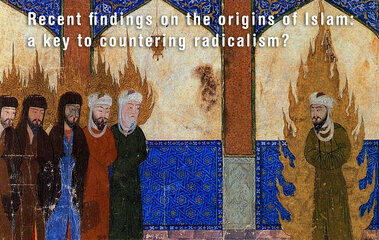- Messages
- 2,145
- Reaction score
- 5
- Points
- 28
- Thread Starter
- #61
Islam
Part 4/4
Conclusion
The nightmare must end for women in Islamic countries.
But the political and legal hierarchies in the Islamic world do not seem ready to reform on women’s rights. Here is a 1998 interview with Shirin Ebadi, one of the first female judges in Iran. She correctly sees abuses in Iranian law, which favors men. However, what has been done about these abuses?
Zohreh Arshadi "was a practising lawyer in Iran prior to her forced exile to Europe. She is currently an advocate in France and is active in human rights and especially of the rights of women. She has been especially active in defence of the rights of women in Iran." She reports on the inequities in Iranian law as it pertains to women:
The Islamic punishments have encouraged a culture of violence against women, especially within the family and has spilled into violence against children. This has been commented upon by many within the country . . . The fact that men receive a lighter punishment if they commit a violence against women undoubtedly encourages such violence. We saw how women could be killed with impunity during alleged adultery. Stoning to death for adultery, although technically admissible for both sexes, has also been carried out mainly against women.
Though these two examples come from Iran, they could multiply throughout the Islamic world. However, the legal hierarchies understand the cost of reform: abandoning many verses in the Quran and many passages in the hadith, and this they cannot do.
A sign of hope? The Iraqi Constitution, so far, says that 25% of the seats in the Parliament are specified for women. So maybe reform can be encouraged in a fledgling democracy.
But if Islamic nations, especially those who follow sharia (Islamic law) closely, refuse to reform, then the second best strategy must be played out. Islam must never be allowed to impose its sharia system of "justice" anywhere in the West and around the world. No sharia courts should be permitted outside of the Islamic world. The Quran—the ultimate source of sharia—oppresses women specifically and people generally.
The Islamic holy book is too patriarchal and culture-bound to be relevant to the new millennium.

Supplemental Material
The readers may go to these three sites for other translations of the Quran: this one has multiple translations; this one has three; and this conservative translation is subsidized by the Saudi royal family.
Here is the website for the online hadith.
A good online resource for the historical context of a sura is here, where Maududi provides excellent background material.
Part One of an article, leading to two other parts, is one of the best and most thorough discussions of women in Islam. It analyzes many Quranic verses, hadith passages, and modern Islamic views, more than this top ten list can cite and analyze. For fair-minded readers, the three-part article is a convincing assessment, leading to one conclusion: Islam dishonors and even abuses women in many areas of life, according to the original source documents of Islam. If Muslim polemicists and missionaries have time on their hands, they should attempt to refute these articles instead of this top ten list, which is only a summary of many other articles and links, like this three-parter.
This webpage has a number of links to women’s issues, as well.
This is a superb overview of the Quran and hadith on women’s inferior status in Islam.
This short booklet has an excellent overview on Islam and women’s role.
This news report states that women in Pakistan have lost the fight to reform rape laws. The report says:
Why must the (raped) woman bring four witnesses? The Quran in Sura 24:4 says:
Evidently, if a woman cannot produce four witnesses, then she must be whipped or flogged.
MEMRI TV reports that Saudi TV aired a talk show that discussed this issue. Scrolling three-fourths of the way down the link, the readers can see an Islamic scholar holding up sample rods that husbands may use to hit their wives.
Memri TV has a transcript of an Iraqi cleric who says that certain nations allow husbands to beat their wives and do not protest it. On the other hand, Islamic societies provide guidelines, such as not hitting on the face and not severely.
Memri TV also has a video clip and transcript of Sheik Yusouf al-Qaradhawi who made commotion in London for opposing homosexuals and advocating wife beating. He says that wife beating is not done by the "best" among the Muslims. Reply: But why is it enshrined in the eternal word of Allah? Muslims constantly bring up the beating done with a toothpick. A toothpick in Muhammad's day was something like a thin branch or long twig. Granted, it could not kill, but it could inflict pain. No one should beat his wife, even threaten to beat her. Why cannot Muslims see this? The Quran says it is legitimate. Of course, he blames the "Zionist lobby" for any persecution he believes that he suffered. This is also irrational.
MEMRI TV has a video clip and a transcript of an Egyptian cleric who says that a man may kill his wife if he catches her in the act of adultery (in flagrante delicto), but his murder of her must take place within a short time of catching her. His punishment is reduced to a mere misdemeanor, which carries a light sentence. The wife, on the other hand, if she kills her husband immediately after the act, does not get a reduced sentence. Why not? The other woman in bed with the first woman's husband may be one of his wives.
MEMRI TV has a transcript of a Bahraini cleric outlining the rules for wife-beating. Apparently, it never occurs to these clerics that this practice is wrong for all times and all places. Bluntly said, Muhammad was misguided in Sura 4:34.
MEMRI TV also provides a transcript of a woman reformer in Saudi Arabia who says women should have more rights. Her battle is noble, but she is fighting uphill.
MEMRI TV has a video clip and a transcript showing a Saudi cleric, a member of the Shura Council, arguing for the rights of women to drive cars. The tone of the exchange reveals that the moderate cleric (moderate on this issue at least) is fighting an impossible battle.
However, MEMRI TV has a video clip and a transcript of another Saudi cleric arguing against giving women the right to drive cars.
This present article criticises Amina Wadud's shaky exegesis of Sura 4:34, but this report shows her leading Muslim prayers for men and women in a church. (Muslims were only able to prevent it from happening in a mosque, but object against her leading prayers anywhere in front of a mixed congregation). The report cites other women who have done this, as well. It also reports on Muslim reactions to this new development. Further discussion and links regarding Amina Wadud's move are found in the Index to Islam on this site.
The man designated by Iran’s hard-line President Mahmoud Ahmadinejad as his Minister of Justice vowed that "improperly-veiled women" will be treated as if they had no Islamic veil at all.
Jamal Karimi-Rad told the local press, "Being improperly veiled and not wearing a veil are no different. When it is clear from the appearance of a woman that she has violated the law, then the crime is obvious and law enforcement agents can take legal measures against her".
"Crimes such as mal-veiling or other prohibited acts, which happen before the eyes of a law enforcement agent, are evident crimes and must be dealt with in accordance with the law", Karimi-Rad said.
Sharia oppresses women because it offers them no freedom of choice. If a Muslim woman volunteers to wear a veil or head covering, then that is her prerogative. However, she should be free not to wear one, without being punished as a criminal.
Following are excerpts from a TV debate on women appearing on Saudi TV, which aired on LBC TV on March 25, 2007.
Interviewer: Does the appearance of Saudi women on TV run counter to Islamic law?
Saudi cleric Nasser Al-Huneini: What we want is for women [to reveal] their culture and intellect. We want women to play a role in the development of society. But a woman who insists upon appearing on TV insists upon showing her body. Why do we act unjustly towards women by saying that we can only benefit from them by presenting them to people this way?
[...]
Interviewer: How did you feel when you read about the debate in the Saudi Shura Council about the appearance of Saudi women in the media?
Saudi newscaster Buthayna Nasser: I felt a sense of injustice and indignation, of course.
Nasser Al-Huneini: On the issue of the hijab, all religious scholars are in agreement that if revealing a woman's face might lead to temptation and other things, it is forbidden. In addition, even when they permitted the revealing of the woman's face, they placed restrictions on this. Even Sheik Al-Albani did so. They stated that only the face and the palms may be exposed. The woman is not allowed to expose her neck or her hair. She is not allowed to appear with make-up or jewelry. The religious scholars have all agreed upon this.
[...]
Buthayna Nasser: Sir, when I appear on TV, and when I claim my right to play a role in this professional field, I demand that my face, which constitutes my identity, be seen. Under no circumstances am I prepared to allow my identity to be obliterated.
[...]
Who are these people who wish to decide for me how I should behave? Why do you treat me as less qualified just because I am a woman? Why is there always a male voice deciding how I should behave? The Lord created me equal to you in my duties, punishment, and reward. When you fast, I fast. When you pray, I pray. When you steal, your hand is cut off, and when I steal, my hand is cut off. This is the greatest evidence that I am not less qualified. I know what I am doing, and I know how to maintain my honor. (Source)
In March 2004, Homa Arjomand, coordinator of the campaign to stop a sharia court in Canada, delivered this speech outlining the abuses that inhere in Islamic law, pertaining to women. Needless to say, sharia favors men’s rights excessively, at the expense of women’s rights. Arjomand tells the story of a sixteen-year-old who was forced to marry a twenty-nine-year-old and suffered physical abuse at his hands. How could this abuse be otherwise, when Allah commanded it in the first place?
Warning! This report has a photo of a Muslim woman in Denmark getting murdered by her brother in an "honor" killing.

Part 4/4
ABRAHAMIC TRADITIONS vs. WOMEN

Top ten rules in the Quran that oppress and insult women
James M. Arlandson
Top ten rules in the Quran that oppress and insult women
James M. Arlandson
Conclusion
The nightmare must end for women in Islamic countries.
But the political and legal hierarchies in the Islamic world do not seem ready to reform on women’s rights. Here is a 1998 interview with Shirin Ebadi, one of the first female judges in Iran. She correctly sees abuses in Iranian law, which favors men. However, what has been done about these abuses?
Zohreh Arshadi "was a practising lawyer in Iran prior to her forced exile to Europe. She is currently an advocate in France and is active in human rights and especially of the rights of women. She has been especially active in defence of the rights of women in Iran." She reports on the inequities in Iranian law as it pertains to women:
The Islamic punishments have encouraged a culture of violence against women, especially within the family and has spilled into violence against children. This has been commented upon by many within the country . . . The fact that men receive a lighter punishment if they commit a violence against women undoubtedly encourages such violence. We saw how women could be killed with impunity during alleged adultery. Stoning to death for adultery, although technically admissible for both sexes, has also been carried out mainly against women.
Though these two examples come from Iran, they could multiply throughout the Islamic world. However, the legal hierarchies understand the cost of reform: abandoning many verses in the Quran and many passages in the hadith, and this they cannot do.
A sign of hope? The Iraqi Constitution, so far, says that 25% of the seats in the Parliament are specified for women. So maybe reform can be encouraged in a fledgling democracy.
But if Islamic nations, especially those who follow sharia (Islamic law) closely, refuse to reform, then the second best strategy must be played out. Islam must never be allowed to impose its sharia system of "justice" anywhere in the West and around the world. No sharia courts should be permitted outside of the Islamic world. The Quran—the ultimate source of sharia—oppresses women specifically and people generally.
The Islamic holy book is too patriarchal and culture-bound to be relevant to the new millennium.
Supplemental Material
The readers may go to these three sites for other translations of the Quran: this one has multiple translations; this one has three; and this conservative translation is subsidized by the Saudi royal family.
Here is the website for the online hadith.
A good online resource for the historical context of a sura is here, where Maududi provides excellent background material.
Part One of an article, leading to two other parts, is one of the best and most thorough discussions of women in Islam. It analyzes many Quranic verses, hadith passages, and modern Islamic views, more than this top ten list can cite and analyze. For fair-minded readers, the three-part article is a convincing assessment, leading to one conclusion: Islam dishonors and even abuses women in many areas of life, according to the original source documents of Islam. If Muslim polemicists and missionaries have time on their hands, they should attempt to refute these articles instead of this top ten list, which is only a summary of many other articles and links, like this three-parter.
This webpage has a number of links to women’s issues, as well.
This is a superb overview of the Quran and hadith on women’s inferior status in Islam.
This short booklet has an excellent overview on Islam and women’s role.
This news report states that women in Pakistan have lost the fight to reform rape laws. The report says:
Statutes known as the Hudood ordinances, based on sharia law, currently operate in Pakistan. They require a female rape victim to produce four male witnesses to corroborate her account, or she risks facing a new charge of adultery.
Most women refuse to report a rape for fear they will be treated as a criminal.
Under current laws, a victim risks courting punishment if she reports a rape allegation as the Hudood ordinances criminalise all extra-marital sex.
A woman who fails to prove that she was raped could then be charged with adultery under the same legislation.
According to a 2002 report by the Human Rights Commission of Pakistan, a woman is raped every two hours and gang raped every eight hours.
However, because of social taboos, discriminatory laws and victimisation of victims by police, campaigners say that the scale of rape is almost certainly higher.
Most women refuse to report a rape for fear they will be treated as a criminal.
Under current laws, a victim risks courting punishment if she reports a rape allegation as the Hudood ordinances criminalise all extra-marital sex.
A woman who fails to prove that she was raped could then be charged with adultery under the same legislation.
According to a 2002 report by the Human Rights Commission of Pakistan, a woman is raped every two hours and gang raped every eight hours.
However, because of social taboos, discriminatory laws and victimisation of victims by police, campaigners say that the scale of rape is almost certainly higher.
Why must the (raped) woman bring four witnesses? The Quran in Sura 24:4 says:
And those who accuse chaste women, and produce not four witnesses, flog them with eighty stripes, and reject their testimony forever, they indeed are the Fasiqun (liars, rebellious, disobedient to Allah).
Evidently, if a woman cannot produce four witnesses, then she must be whipped or flogged.
MEMRI TV reports that Saudi TV aired a talk show that discussed this issue. Scrolling three-fourths of the way down the link, the readers can see an Islamic scholar holding up sample rods that husbands may use to hit their wives.
Memri TV has a transcript of an Iraqi cleric who says that certain nations allow husbands to beat their wives and do not protest it. On the other hand, Islamic societies provide guidelines, such as not hitting on the face and not severely.
Memri TV also has a video clip and transcript of Sheik Yusouf al-Qaradhawi who made commotion in London for opposing homosexuals and advocating wife beating. He says that wife beating is not done by the "best" among the Muslims. Reply: But why is it enshrined in the eternal word of Allah? Muslims constantly bring up the beating done with a toothpick. A toothpick in Muhammad's day was something like a thin branch or long twig. Granted, it could not kill, but it could inflict pain. No one should beat his wife, even threaten to beat her. Why cannot Muslims see this? The Quran says it is legitimate. Of course, he blames the "Zionist lobby" for any persecution he believes that he suffered. This is also irrational.
MEMRI TV has a video clip and a transcript of an Egyptian cleric who says that a man may kill his wife if he catches her in the act of adultery (in flagrante delicto), but his murder of her must take place within a short time of catching her. His punishment is reduced to a mere misdemeanor, which carries a light sentence. The wife, on the other hand, if she kills her husband immediately after the act, does not get a reduced sentence. Why not? The other woman in bed with the first woman's husband may be one of his wives.
MEMRI TV has a transcript of a Bahraini cleric outlining the rules for wife-beating. Apparently, it never occurs to these clerics that this practice is wrong for all times and all places. Bluntly said, Muhammad was misguided in Sura 4:34.
MEMRI TV also provides a transcript of a woman reformer in Saudi Arabia who says women should have more rights. Her battle is noble, but she is fighting uphill.
MEMRI TV has a video clip and a transcript showing a Saudi cleric, a member of the Shura Council, arguing for the rights of women to drive cars. The tone of the exchange reveals that the moderate cleric (moderate on this issue at least) is fighting an impossible battle.
However, MEMRI TV has a video clip and a transcript of another Saudi cleric arguing against giving women the right to drive cars.
This present article criticises Amina Wadud's shaky exegesis of Sura 4:34, but this report shows her leading Muslim prayers for men and women in a church. (Muslims were only able to prevent it from happening in a mosque, but object against her leading prayers anywhere in front of a mixed congregation). The report cites other women who have done this, as well. It also reports on Muslim reactions to this new development. Further discussion and links regarding Amina Wadud's move are found in the Index to Islam on this site.
The man designated by Iran’s hard-line President Mahmoud Ahmadinejad as his Minister of Justice vowed that "improperly-veiled women" will be treated as if they had no Islamic veil at all.
Jamal Karimi-Rad told the local press, "Being improperly veiled and not wearing a veil are no different. When it is clear from the appearance of a woman that she has violated the law, then the crime is obvious and law enforcement agents can take legal measures against her".
"Crimes such as mal-veiling or other prohibited acts, which happen before the eyes of a law enforcement agent, are evident crimes and must be dealt with in accordance with the law", Karimi-Rad said.
Sharia oppresses women because it offers them no freedom of choice. If a Muslim woman volunteers to wear a veil or head covering, then that is her prerogative. However, she should be free not to wear one, without being punished as a criminal.
Following are excerpts from a TV debate on women appearing on Saudi TV, which aired on LBC TV on March 25, 2007.
Interviewer: Does the appearance of Saudi women on TV run counter to Islamic law?
Saudi cleric Nasser Al-Huneini: What we want is for women [to reveal] their culture and intellect. We want women to play a role in the development of society. But a woman who insists upon appearing on TV insists upon showing her body. Why do we act unjustly towards women by saying that we can only benefit from them by presenting them to people this way?
[...]
Interviewer: How did you feel when you read about the debate in the Saudi Shura Council about the appearance of Saudi women in the media?
Saudi newscaster Buthayna Nasser: I felt a sense of injustice and indignation, of course.
Nasser Al-Huneini: On the issue of the hijab, all religious scholars are in agreement that if revealing a woman's face might lead to temptation and other things, it is forbidden. In addition, even when they permitted the revealing of the woman's face, they placed restrictions on this. Even Sheik Al-Albani did so. They stated that only the face and the palms may be exposed. The woman is not allowed to expose her neck or her hair. She is not allowed to appear with make-up or jewelry. The religious scholars have all agreed upon this.
[...]
Buthayna Nasser: Sir, when I appear on TV, and when I claim my right to play a role in this professional field, I demand that my face, which constitutes my identity, be seen. Under no circumstances am I prepared to allow my identity to be obliterated.
[...]
Who are these people who wish to decide for me how I should behave? Why do you treat me as less qualified just because I am a woman? Why is there always a male voice deciding how I should behave? The Lord created me equal to you in my duties, punishment, and reward. When you fast, I fast. When you pray, I pray. When you steal, your hand is cut off, and when I steal, my hand is cut off. This is the greatest evidence that I am not less qualified. I know what I am doing, and I know how to maintain my honor. (Source)
In March 2004, Homa Arjomand, coordinator of the campaign to stop a sharia court in Canada, delivered this speech outlining the abuses that inhere in Islamic law, pertaining to women. Needless to say, sharia favors men’s rights excessively, at the expense of women’s rights. Arjomand tells the story of a sixteen-year-old who was forced to marry a twenty-nine-year-old and suffered physical abuse at his hands. How could this abuse be otherwise, when Allah commanded it in the first place?
Warning! This report has a photo of a Muslim woman in Denmark getting murdered by her brother in an "honor" killing.
Attachments
Last edited:

